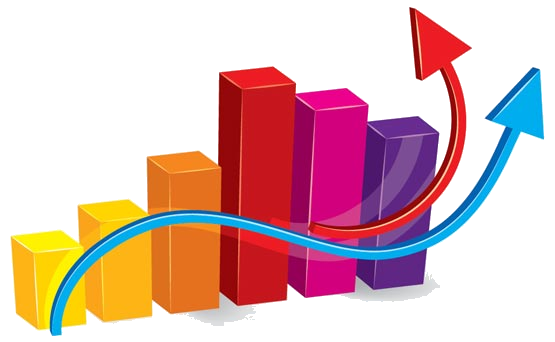answer discussion:Standardized Terminology and Advanced Nursing Practice
Order Description
Derived from your healthcare experience, determine the utility of standardized terminology and
nomenclature in nursing informatics from an advanced nursing practice perspective
Introduction
Part of managing technological change, as defined by Lorenzi and Riley (2010), is understanding
unique aspects of nursing informatics and its application to the healthcare environment. Similarly,
a function of expert nursing practice is a commitment to change that is evidenced across nursing
specialties and practice environments (Morrison &Symes, 2011). It is important for the DNP-prepared
nurse to become familiar with nursing informatics language, because it will be increasingly used in
future advanced nursing practice. The DNP-prepared nurse will benefit from establishing a
relationship with an informatics nurse specialist who serves in one of the many roles emerging in
this new and dynamic specialty. However, the DNP-prepared nurse must first become acquainted with
some unique principles to nursing informatics.
Reflection
Take a moment to reflect on a nursing language used in your advanced nursing practice or in the
practice of other DNP-prepared nurses. Is the language recognized and/or shared by nurses beyond
your practice environment? If not, has interprofessional collaboration or communication suffered?
Nursing Informatics Nomenclature
A systematic approach to naming is known as a nomenclature. Such terms are typically elaborated
according to a preestablished set of rules. Examples of nursing nomenclatures that are important to
the advanced nursing practice role include SNO-MED and ICNP© (Coenen& Kim, 2010).
Nursing Informatics Taxonomy
Advanced nursing practice has also identified a need to provide leadership in the design of
national or large patient care datasets and related standardized languages for use in such systems
as the electronic health record (Fetter, 2009a, 2009b). At the level of the DNP-prepared nurse, an
understanding and an ability to exercise the distinct criteria for such languages are consistent
with the move of our current advanced nursing practice environment toward the unique terms in
language systems that will contribute to multipurpose data and information. Informatics nurse
specialists have further documented standardized nursing-language contributions in realizing the
goals of a reference terminology of unique terms through the development of information systems
that are capable of increased interprofessional collaboration between healthcare administration,
information scientists, and providers of care.
Such examples include the following.
1. NANDA: North American Nursing Diagnosis Association
2. NMDS: Nursing Minimum Data Set
3. NIC and NOC: Nursing Interventions Classification (NIC) and Nursing Outcomes Classification
(NOC)
4. HHCC: Home Healthcare Classification
5. OMAHA system
6. PCDS: Patient Care Data Set
Nursing Research: A Tool for Action
NANDA Anecdotal ExemplarNMDS Anecdotal Exemplar NIC/NOC Anecdotal ExemplarHHCC and OMAHA System
Anecdotal ExemplarsPCDS Anecdotal Exemplar
Review the following interactive activities to learn more about the examples listed above.
Matching the term and its information
Print
Reset
Use Keyboard
Drag each term from the center column to its corresponding definition on the left or right side.
Founded in 1950 to validate nursing diagnoses
Implemented in 1987 to further the scientific classification of nursing
Formulated in 1994-5 to encompass patient problems, patient care goals, goal evaluation, and
patient care orders
NANDA
NMDS
NIC/NOC
HHCC & Omaha System
PCDS
Developed in 1972 to identify and document essential data using nursing vocabularies
Designed in 1991-2 to address unique community health problems, interventions, and outcomes
Knowledge Management Forecasting
As nursing languages have been further validated, an effort in both primary care and complex
organizations has emerged to better capture data in electronic medical records through reference
terminology and information modeling (Fahey &Burbridge, 2008). Nursing informatics requires three
elements that are necessary for organizing the domains related to nursing knowledge: logical
reasoning, nursing expertise, and standardized terminologies.
Organizing Domain Knowledge, Sources of Reference
Logical ReasoningNursingExpertiseStandardized Terminologies
A character (or grouping of characters) that refers to a unique nursing term (or terms ) that is,
in turn, structured to pervade computer systems, such as described in each of these unique
standardized nursing terminologies, may contribute to future nursing research. For advanced nursing
practice purposes, informatics nurse specialists recommend the following trajectory for future
efforts:
1. a description of poly-hierarchies and the classifications necessary for a nursing reference
language;
2. systematic evaluations of the extent to which classified information accurately and
completely represents domains of nursing knowledge; and
3. modifications or extensions to existing interprofessional efforts.
As noted by Simpson (2009), nursing informatics certainly has much to offer advanced nursing
practice to produce innovation and high quality, cost-effective healthcare.
References
Coenen, A., & Kim, T. (2010).Development of terminology subsets using ICNP.International Journal of
Medical Informatics, 79(7), 530–538.
Fahey, D., &Burbridge, G. (2008). Application of diffusion of innovations models in hospital
knowledge management systems: Lessons to be learned in complex organizations. Hospital Topics, 86
(2), 21–31.
Fetter, M. (2009a). A language of precision.Issues in Mental Health Nursing, 30(2), 133–134.
Fetter, M. (2009b). Health information literacy and mental health nursing.Issues in Mental Health
Nursing, 30(1), 64–85.
Fetter, M. (2009c). Mastering the challenge of interoperability in nursing informatics.Issues in
Mental Health Nursing, 30(9), 591–592.
Lake, S., Moss, C., & Duke, J. (2009). Nursing prioritization of the patient need for care: A tacit
knowledge embedded in the clinical decision-making literature. International Journal of Nursing
Practice, 15(5), 376–388.
Lorenzi, N. M. & Riley, R. T. (2010).Managing technological change: Organizational aspects of
health informatics. New York, NY: Springer Publishing Company.
Lundberg, C., Brokel, J., Bulechek, G., Butcher, H., Martin, K., Moorhead, S., . . .Giarrizzo-
Wilson, S. (2008). Selecting a standardized terminology for the electronic health record that
reveals the impact of nursing on patient care.Online Journal of Nursing Informatics, 12(2).
Mitchell, R. N. (2010). The connection between meaningful use and ICD-10.For the Record (Great
Valley Publishing Company, Inc.), 22(22), 20–23.
Morrison, S. M., &Symes, L. (2011).An integrative review of expert nursing practice.Journal of
Nursing Scholarship, 43(2), 163–170.
Ozbolt, J. (2000). Terminology standards for nursing: Collaboration at the summit. Journal of the
American Medical Informatics Association, 7(6), 517–522.
Perkins, S., & Larson, G. (2010). Navigating ICD-10: How to get from point A to point B. Health
Management Technology, 31(12), 1–7.
Saba, V.K. (2001). Nursing informatics: Yesterday, today and tomorrow. International Nursing
Review, 48(3), 177–187.
Simpson, R. (2009). Neither seen nor heard: Why we need a child-friendly electronic health record.
Nursing Administration Quarterly, 33(1), 78–83.
Whitley, G. (2009). The road ahead.International Journal of Nursing Terminologies &
Classifications, 20(3), 109

 Our orders are delivered strictly on time without delay
Our orders are delivered strictly on time without delay  Our orders are delivered strictly on time without delay
Our orders are delivered strictly on time without delay 



